10 unbelievably cool research facilities
some incredible beasts have been constructed in the name of research and below are 5 of the most immediately intriguing. there are plenty more out there which will be highlighted in the near future as i’m making this a series of sorts. let me know if you have any in mind for the next collection.
on to the brilliance…
1. super kamiokande detector, kamioka observatory, japan


an old favourite on the intertubes, this 50′000 ton cylindrical ‘ring-imaging water cerenkov detector’ can be found at the kamioka mozumi mine in japan - 1′000m underground. clever people built the machine to detect neutrinos, proton decay and cosmic rays: this is done using the 12′000-ish photomultiplier tubes (extremely sensitive light detectors) visible on all walls of the ‘ultra-purified water-filled’ tank. to offer further explanation would reveal my scientific ineptitude. instead, go here for a nicely simplified explanation and here for some incredible hi-res photos large enough to incapacitate the average pc.
2. benefield anechoic facility, california, usa

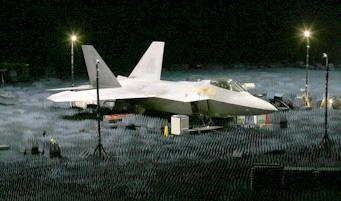
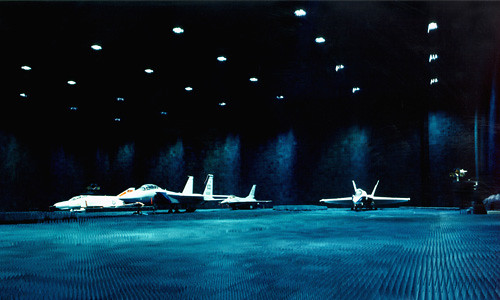
first of all (in case you don’t know) an anechoic chamber is a room which has been filled with sound absorbing materials in order to minimise all reflections from internal surfaces, thus making the space echo-less. more commonly these rooms are used to test and research sound equipment due to the lack of any such interference affecting the equipment’s output. the benefield anechoic facility you see above is the largest anechoic chamber on earth and, rather than using acoustically absorbent materials, is filled with radiation absorbent materials in the form of 816′000 foam cones designed to minimise the reflection of radio frequency signals. to read more, look here.
3. the z machine, sandia national laboratory, new mexico, usa

the z machine is the largest x-ray generator on earth and is believed by many as the key to understanding controlled fusion.
‘the z machine uses a short burst of intense electricity - only a few 10 billionths of a second long - that forces an ionized gas to implode. the process is called a z-pinch because the pulse creates a magnetic field that squeezes particles in the vertical direction, which math books usually label as the “z-axis.” at the center of the z-pinch, in the space of a small soup can, gas particles race at each other at a million miles an hour. the collisions result in X-rays and extremely high temperatures.’
in 2006 the machine unexpectedly produced plasmas with temperatures in excess of 3.6 billion °f. that’s hotter than the core of our sun.
a very brief video tour…
4. very large array, new mexico, usa

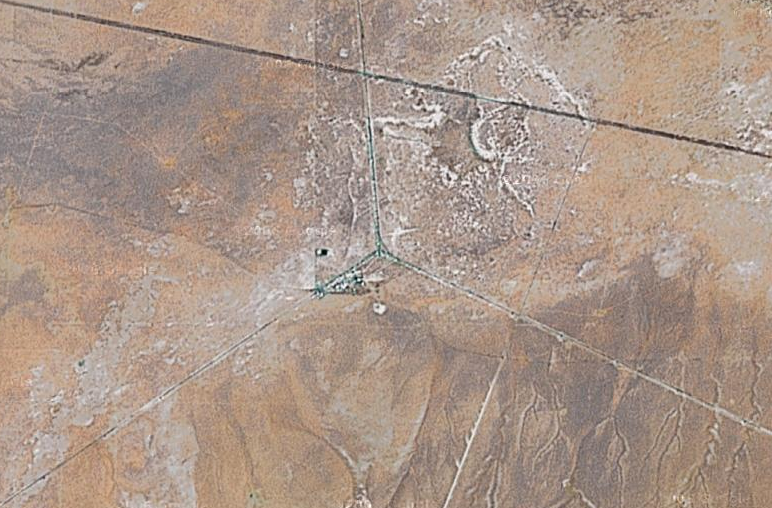
arranged on an enormous y-shaped set of tracks on the plains of san augustin is the ‘very large array’, a collection of 27 radio antennas used primarily by astronomers around the world. each antenna weighs 230 tons and can be moved by way of the 3 13 mile long tracks, giving a total of 4 different configurations, the data from all 27 antenna can then be combined to give the resolution of an antenna whopping 22 miles across. the 2nd picture, from google maps, gives you some idea of the scale of the observatory.
the direct link to the vla on google maps is here. the vla website is here.
5. large hadron collider, cern, switzerland/france
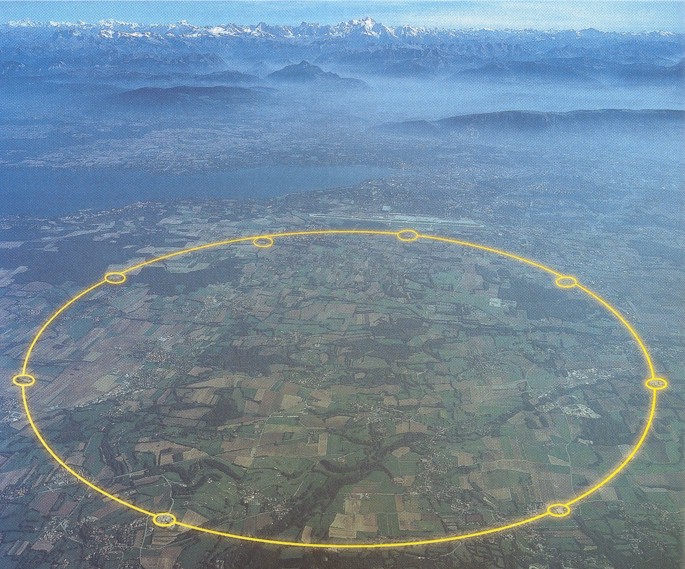

the large hadron collider, when completed very soon, will be the largest particle collider on earth, one of the intentions being to recreate the slightly hot conditions that occured immediately after the big bang, in turn resulting in the observation of the ‘god particle‘. the huge circle in the 1st photo is the location of the lhc tunnel, located approximately 100m below ground and measuring 27km in circumference. in the tunnel are 2 parallel tubes, each carrying protons in opposite directions at near the speed of light using the surrounding superconducting magnets. to carry on with this explanation could take days and a lot of mistakes so you should continue reading about this mammoth machine here.
6. large helical device, gifu, japan
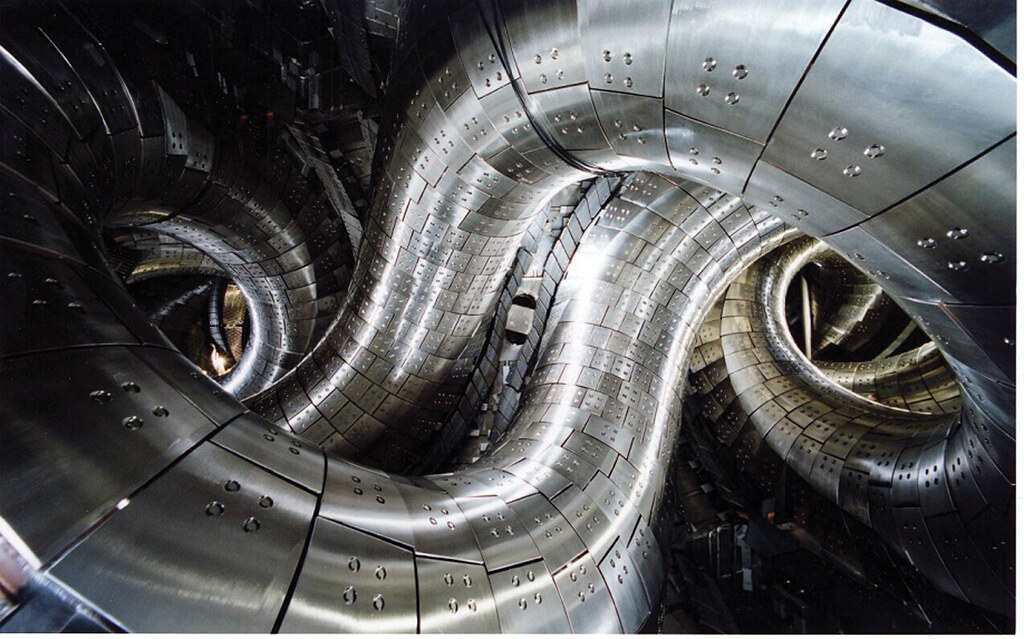
the phenomenal photo above shows superconducting coils within the large helical device in japan, a machine which holds the title of ‘largest superconducting stellarator in the world’. these huge winding coils are used to generate magnetic fields strong enough to confine a plasma in the centre which needs to be heated to the point where a controlled nuclear fusion reaction will occur - 100 million degrees.
you can read more about the device here. a mammoth version of the photo is here.
7. odeillo solar furnace, odeillo, france
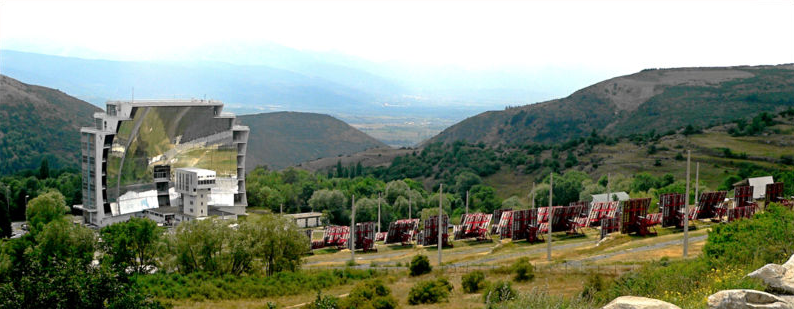
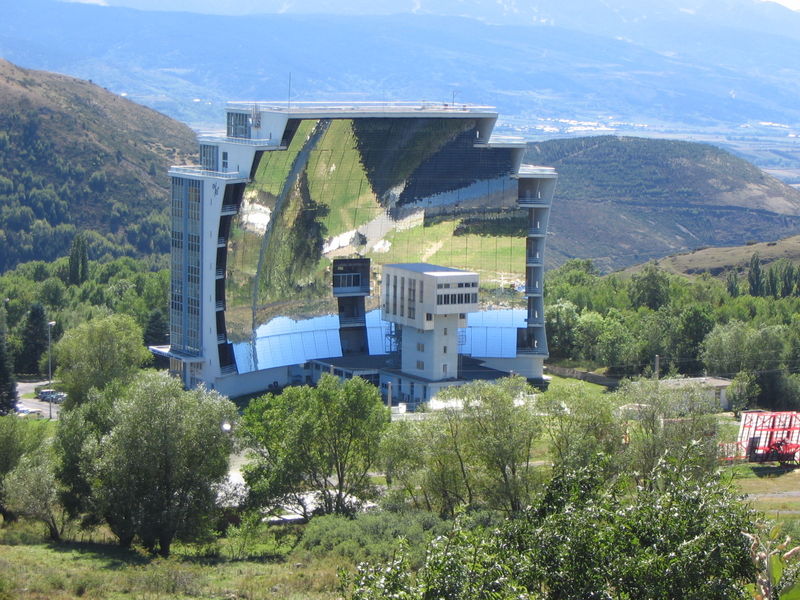
built in 1969, this brilliantly shiny oddity is the 8-storey high odeillo solar furnace in france: at present the largest on the planet. the 63 smaller mirrors on the hillside reflect the sun onto the huge parabolic reflector you see in the photos, this in turn reflecting the solar radiation very precisely onto a point just 18 metres in front of the parabola. using this method, temperatures can reach an unbelievably hot 3400°C. the incredible amount of heat generated by the furnace is used for research in many areas including high temperature solar engineering (advanced solar power systems, solar chemistry, etc.), photo-physics and chemistry applied physics. the official site is here.
8. atf fire research laboratory, maryland, usa
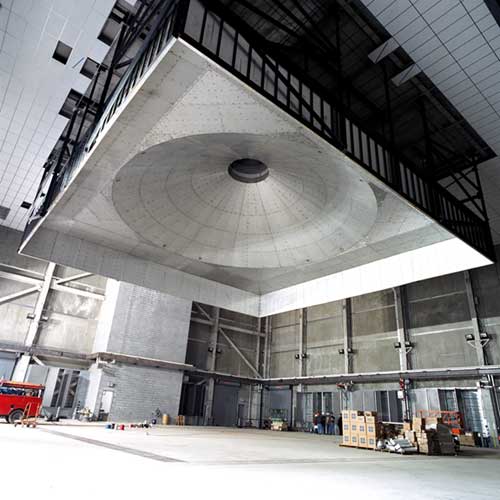
measuring a whopping 60ft x 60ft, this is the largest calorimetry hood on earth and is an essential part of the atf fire research laboratory. the hood needs to be this large in order to monitor and measure the heat output created by burning buildings underneath it. full scale houses have been specifically built, placed under the hood and destroyed in the name of research on a regular basis since the state-of-the-art facility was opened in 2003, and that’s just one of the 3 hoods in a lab which is so impressive that it’s visited by experts the world over.
official site is here.
9. ligo observatories, louisiana & washington, usa
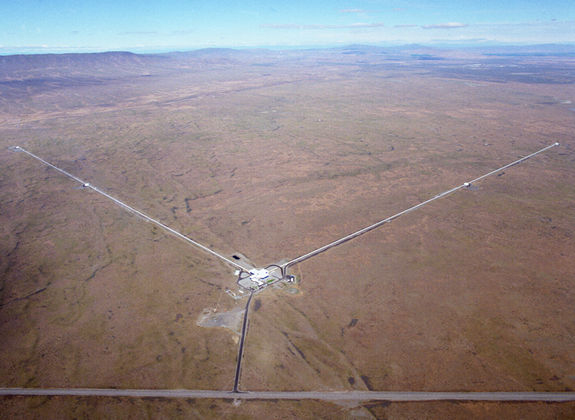
the photo above shows ligo’s hanford observatory, one of 2 main facilities used by ligo to detect ‘ripples’ or gravitational waves in space-time. both of the observatories have an enormous l-shaped interferometer, each arm measuring 4km in length, with a mirror at each end. laser light enters the ‘arms’ from the corner of the l-shape and then bounces back and forth between each mirror a set number of times. the reason for this is better explained in the clip below.
for a simple explanation about both gravitational waves and ligo itself, watch the clip. to see the hanford observatory on google maps, click here. the ligo website is here.
10. arecibo observatory, arecibo, puerto rico
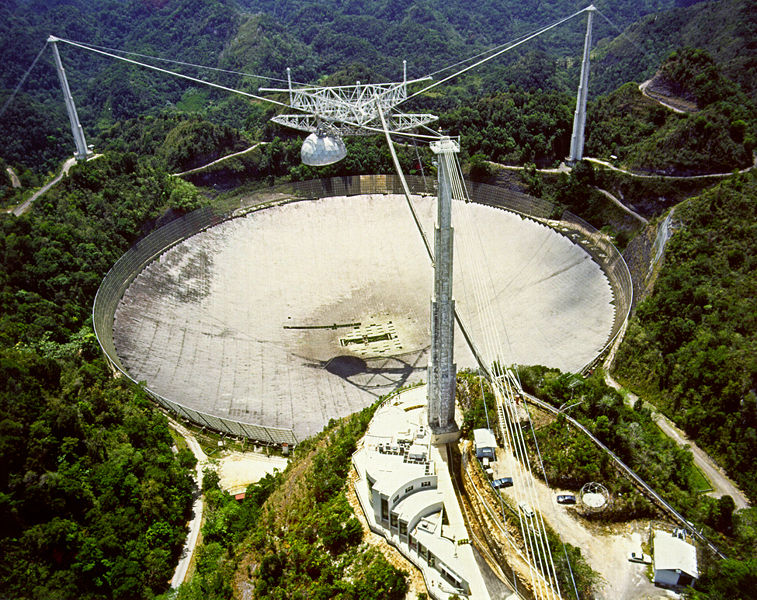

the arecibo observatory in puerto rico contains the largest curved focusing dish on earth and is used for 3 main research purposes: radio astronomy, aeronomy and radar astronomy observations of solar system objects. the dish has been set in a depression between some hills and, to compensate for its fixed position, the receiver can be repositioned as it sits 450ft above ground. the observatory’s incredible appearance resulted in a cameo in goldeneye’s final scene.
the official arecibo site can be found here. also, the gigantic structure can be seen clearly on google maps here.





0 comments:
Post a Comment